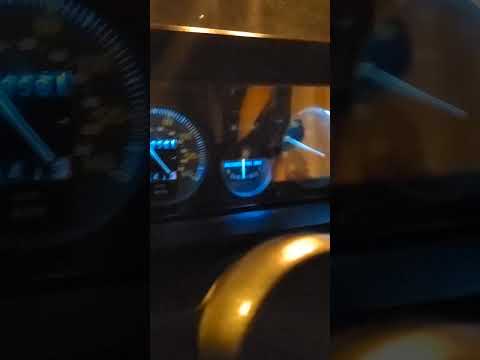Jonohhh
True Classic
1985 Cali 1500 w/ AC
So, I'm pretty new to X1/9s, in fact, I hadn't seen one until 2 months after I had purchased my own, when I finally took delivery of it.
However, since getting it I have struggled with one thing: an absolutely attrocious rattle/vibration from the engine area at anything more than 5000-5500 rpm, and almost no power above 5000. Often, shifting at 6000 results in the car having twice the acceleration in the next gear than it did up top in the previous gear.
Now of course this is a smog era powertrain from the days where 500ci V8's made 160hp at 3600 rpm, but given how people on here describe the little lampredi SOHC, this does not seem to be correct. Every video I can find online shows the X revving cleanly to redline, without anywhere near as substantial of a power fall off, and without horrendous vibration. It feels like the engine is gonna fly apart.
A few weeks ago I found that the crankshaft pulley was not evenly tensioning the belt- one of the studs are stripped. I thought for sure this was the cause...it wasn't. No change. Before that I thought it was a clogged cat...disposed of that...no change.
Any tips? All I can find is that the injectors do not all share the same part number ( I will try to find the documentation of that and share it below).
Ignition timing was redone, and cam timing verified when I rebuilt the distributor.
My current list of possible causes includes:
- ignition timing to far advanced, either somehow by too much base timing or by an improperly setup centrifugal advance mechanism. if this were the case I would assume that these engines in stock form on 93 octane fuel are not knock limited and I am potentially going too far advanced of peak power, causing the initial stages of combustion to work against the rotation of the engine. If advance curves are the problem I would think retarding the base ignition timing would improve the high rpm performance?
- mismatched injectors causing high cylinder to cylinder AFR and thus power production variance. this sounds good, but the vibration is strong, and does it under low load, so I'm a bit skeptical
Does anyone have experience with something like this? Otherwise in the lower rpm ranges the engine runs fantastic... it has an occasional miss here or there at idle which I assume is normal with Ljet, and it also doesn't have the vacuum advance curves where I want them, but I digress.
Also, the dogbone mount is new, and the lower engine mount is not so bad that the axle tripod is rubbing on the cross member.
Tia, Jon!
So, I'm pretty new to X1/9s, in fact, I hadn't seen one until 2 months after I had purchased my own, when I finally took delivery of it.
However, since getting it I have struggled with one thing: an absolutely attrocious rattle/vibration from the engine area at anything more than 5000-5500 rpm, and almost no power above 5000. Often, shifting at 6000 results in the car having twice the acceleration in the next gear than it did up top in the previous gear.
Now of course this is a smog era powertrain from the days where 500ci V8's made 160hp at 3600 rpm, but given how people on here describe the little lampredi SOHC, this does not seem to be correct. Every video I can find online shows the X revving cleanly to redline, without anywhere near as substantial of a power fall off, and without horrendous vibration. It feels like the engine is gonna fly apart.
A few weeks ago I found that the crankshaft pulley was not evenly tensioning the belt- one of the studs are stripped. I thought for sure this was the cause...it wasn't. No change. Before that I thought it was a clogged cat...disposed of that...no change.
Any tips? All I can find is that the injectors do not all share the same part number ( I will try to find the documentation of that and share it below).
Ignition timing was redone, and cam timing verified when I rebuilt the distributor.
My current list of possible causes includes:
- ignition timing to far advanced, either somehow by too much base timing or by an improperly setup centrifugal advance mechanism. if this were the case I would assume that these engines in stock form on 93 octane fuel are not knock limited and I am potentially going too far advanced of peak power, causing the initial stages of combustion to work against the rotation of the engine. If advance curves are the problem I would think retarding the base ignition timing would improve the high rpm performance?
- mismatched injectors causing high cylinder to cylinder AFR and thus power production variance. this sounds good, but the vibration is strong, and does it under low load, so I'm a bit skeptical
Does anyone have experience with something like this? Otherwise in the lower rpm ranges the engine runs fantastic... it has an occasional miss here or there at idle which I assume is normal with Ljet, and it also doesn't have the vacuum advance curves where I want them, but I digress.
Also, the dogbone mount is new, and the lower engine mount is not so bad that the axle tripod is rubbing on the cross member.
Tia, Jon!
Last edited:

